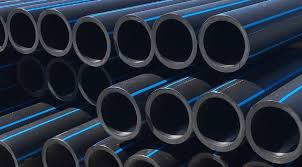Oct . 10, 2024 15:45 Back to list
ppr pipe cost service
Understanding PPR Pipe Cost and Its Influencing Factors
PPR (Polypropylene Random Copolymer) pipes have gained significant popularity in various plumbing and industrial applications due to their durability, low cost, and resistance to corrosion. As industries and households alike shift towards more sustainable and reliable plumbing solutions, understanding the cost implications associated with PPR pipes becomes essential for consumers and businesses.
Overview of PPR Pipes
PPR pipes are made from a type of plastic known as polypropylene, which is characterized by its strength, flexibility, and chemical resistance. Unlike traditional metal pipes, PPR pipes do not corrode or rust, making them particularly advantageous for transporting water and other fluids. They can withstand high temperatures and pressures, which allows them to be used in hot and cold water systems, underfloor heating, and industrial applications.
Cost Components of PPR Pipes
The cost of PPR pipes can be influenced by several factors
1. Material Quality The quality of the raw materials used in manufacturing PPR pipes plays a crucial role in determining the final price. Higher-grade polypropylene will likely lead to better performance and durability but at an increased cost.
2. Pipe Specifications The diameter, thickness, and length of the pipes required for a specific project directly affect the overall material cost. Larger and thicker pipes generally cost more due to the increased amount of material used.
3. Manufacturing Process The complexity of the manufacturing process and the technology used also contribute to the cost. Automated production lines may lead to more consistent quality and lower labor costs, potentially reducing the price of the end product.
4. Market Demand and Supply Fluctuations in demand for PPR pipes can lead to price variations. For example, during periods of increased construction and renovation activities, the demand for plumbing materials rises, which can drive up prices.
ppr pipe cost service

5. Logistics and Transportation The distance from the manufacturing plant to the end consumer can impact costs. Longer transportation routes can increase logistics costs, which may then be reflected in the pricing of PPR pipes.
6. Installation Costs Beyond the material costs, installation plays a significant role in the overall expenditure. While PPR pipes are relatively easy to install due to their lightweight nature and ease of joining using heat fusion techniques, the labor costs associated with installation can vary widely based on professional rates in different regions.
PPR Pipe Cost Comparison
When comparing PPR pipe costs with other types of piping materials, such as PVC, CPVC, or stainless steel, several advantages of PPR become clear. Although PPR pipes might be slightly more expensive than PVC or CPVC, they tend to outlast these materials due to their superior chemical resistance and mechanical strength. On the other hand, when compared to stainless steel, PPR pipes are considerably more economical, both in terms of material cost and installation.
Benefits of Choosing PPR Pipes
Investing in PPR pipes comes with a host of advantages. Firstly, their longevity means that they do not require frequent replacement, leading to lower long-term costs. Secondly, the energy efficiency of PPR pipes, especially regarding hot water transport, can lead to significant savings on energy bills. Additionally, they are lightweight, making them easier to handle and install, which can contribute to reduced labor costs.
Market Trends and Future Outlook
As the construction industry moves towards more sustainable practices, the demand for PPR pipes is expected to continue to rise. Innovations in manufacturing processes and increased awareness of the benefits of PPR pipes are likely to enhance their market share. Additionally, the global shift towards eco-friendly materials is driving companies to focus on PPR as a preferable choice for water distribution systems.
Conclusion
In conclusion, while the cost of PPR pipes reflects several influencing factors such as material quality, specifications, and market dynamics, they ultimately provide a reliable, durable, and cost-effective solution for various plumbing needs. As the demand for sustainable building materials continues to grow, understanding the cost structure of PPR pipes will be vital for making informed purchasing decisions that meet both budgetary constraints and performance requirements.
-
High-Quality PVC Borehole Pipes Durable & Versatile Pipe Solutions
NewsJul.08,2025
-
High-Quality PVC Perforated Pipes for Efficient Drainage Leading Manufacturers & Factories
NewsJul.08,2025
-
High-Quality PVC Borehole Pipes Durable Pipe Solutions by Leading Manufacturer
NewsJul.08,2025
-
High-Quality PVC Borehole Pipes Reliable PVC Pipe Manufacturer Solutions
NewsJul.07,2025
-
High-Quality UPVC Drain Pipes Durable HDPE & Drain Pipe Solutions
NewsJul.07,2025
-
High-Quality Conduit Pipes & HDPE Conduit Fittings Manufacturer Reliable Factory Supply
NewsJul.06,2025

